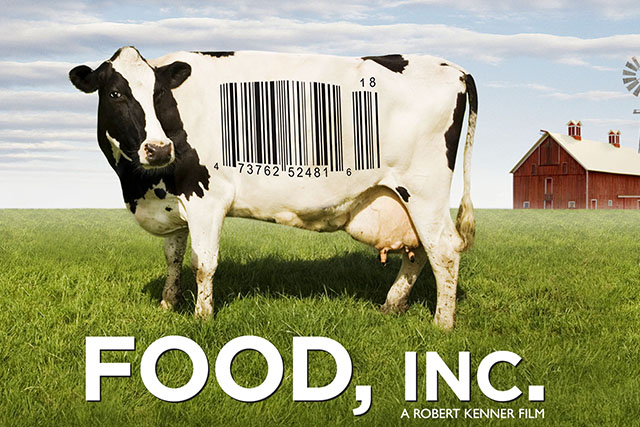The documentary Food Inc directed by Robert Kenner was released in 2008. It reflects on the social, health, economical and environmental costs and consequences of the corporations that have taken over all aspects of the food chain in the United States. It explores the uniformity, conformity and cheapness applied widely in the food industry to conclude how consumers are falling victims to this global industrialized food store.
The documentary opens with the question – “Why is it that you can buy a double cheeseburger at McDonalds at 99 cents when you can’t even get a head of broccoli at 99 cents?”
The choice made is a reflection of not only what appeals to a person or whether they want to consume good or bad calories but a reflection of what they can afford. Between 2013 and 2016, 37% of adults in America (approx. 85 million people) consumed fast food on a given day. This has resulted in the prevalence of obesity being 42.4% in the country. Obesity leads to a very costly disease – Diabetes, which initially only affected adults but now has seeped enough to emerge in children. 1 in 3 Americans born after 2000 will contract onset diabetes. This brings in the paradox where families are either spending a lot to buy healthy food or spending a lot to buy medicines to counterfeit the soaring effects of the unhealthy food that they consume.
Noticing this rise in unhealthy patterns in America’s empty calories, Gregg Segal, a photographer, was determined to find regions and communities where slow food would never be replaced by junk. He published ‘The Daily Bread : What kids around the world eat’ in which he travelled to different countries to capture region wise diets of the kids. He says- “Now we are seeing that the diets of all the kids from different countries is kind of converging. It is almost as if their parents are shopping from the same global food store.” This phenomena has been explained in the documentary with how influential the fast food industry has been on the supermarket business leaving one to explore how much of our diet comes from a package and not the farm.
It is essentially due to the rise in the role of corporations in the food we consume which comes at the cost of the farmers and consumers. Despite owning the land that they are farming and producing on, farmers have no say in the process of the production once they sign contracts with corporations. In the documentary, Carole Morison – a farmer – describes her farm as “mass production in an assembly line in a factory”. Farmers are forced into “upgrades”, which transforms their farms at very high costs into factories for meat and crop production. This drives them into heavy debts. The consumers on the other hand, are given absolutely no correct information about the packaged meat/ vegetable with misleading and false labels. Not only are their health costs but also social costs. The documentary showcases illegal immigrants that are employed at the meat processing facilities who would never be able to raise their voice against the unsanitary and unjust working conditions due to their vulnerable status. The power driven by the corporations is so large that it costs farmers to even speak against them. Similarly many who allowed the filing to take place in their farms for this documentary were sued and had to pay a heavy price.
This way of production can be traced to the entry of fast food, when the Mc Donald brothers created this revolutionary manner of introducing the factory to the back of the kitchen. The workers were specialized with only having to do one thing again and again. “Mcdonalds is the largest purchaser of beef in the United States and if they want their hamburgers to taste the same throughout the world, then they just change how ground beef is produced.”Similarly other multinational chains have monopolized other ground meat and crop, which they now control according to their sales and preferences.
The consequences of this system can be understood by analyzing some of these statistics. “At the turn of the century, a farmer could produce enough food for six to eight people. Now the average American farmer can feed 126 people ” However, this cannot be defined as an increase in efficiency when farms and farmers are being rendered unemployed due to the power structures. The number of operating farms and farmers in the United States have steeply declined since the 1930s.With7 millionfarms operational then and the agricultural industry making up for 70% of the workforce, there are only 2 million farms now, with farmers and ranchers being only 1.3% of the employed population. Simultaneously, both global hunger and obesity are on a rise and worsening in North America.
Another episode that is highlighted gravely in the documentary is of the E.coli bacteria outbreak and the linkages to the rising food poisoning in the States . The chief of staff of the U.S Department of Agriculture (USDA) is the former chief lobbyist of the beef industry of Washington and the head of the Food and Drug Administration (FDA) was the former executive Vice President of the National Food Processors Association. As put by the documentary – “These regulatory agencies are being controlled by the very companies they are supposed to be scrutinizing.”Due to this the food inspections and other legal documentation and formulation with regard to food has decreased in the US since the 1970s. Most of the responsibility to avoid adulterated and bacteria infected food lies on the producers of the meat and the crop. In the case of bacteria like Salmonella which have yet not been declared as adulterants, government agencies can only apply pressure on the producers while the decision to recall the food off the shelf lies on the corporations. That would however cause the company to lose out on profits. It took an year of investigation and pressure for Foster Farms to recall their chickens from the market even though it was affected.
One of the most striking features of this documentary would be the significant changes in the lives of the people and the families that it has showcased. One family that fell victim to the above laid out scenario has now digressed its way to bring more awareness regarding this. The daughter is studying to become a food nutritionist and the mother has involved herself in healthcare systems of the community. Moreover, the few farmers who allowed surveillance and spoke in the documentary were sued and could not continue their contracts with the corporations they had signed with earlier. All of them have now switched to organic farming, and created a chain for healthier production and supply of food to consumers. Robert Kenner, the director also came forward with a few activists and launched the Fix Food Campaign, that allows people to be aware of the food they are consuming and its correlation with the chronic disease epidemic in America.
Vanshika Mittal is an undergraduate at Ashoka University pursuing Economics and Environmental Sciences.

